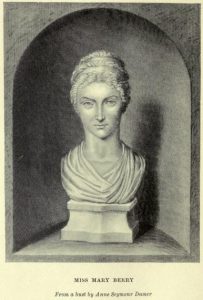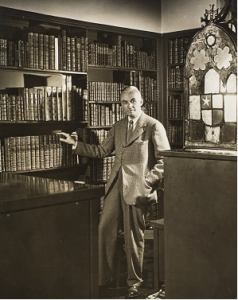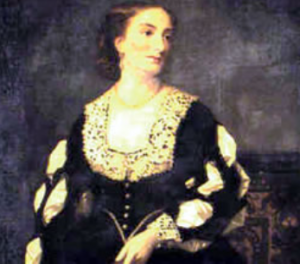Blog: Horace Walpole’s Curators
Written by Nevil Tomlinson, Volunteer Guide and Membership Newsletter Editor
21 May 2020
During his lifetime Horace Walpole built Strawberry Hill, filled it with an eclectic collection that we call his ‘treasure’, and wrote many letters and other literary works. As he neared the end of his life, Horace carefully ensured that this assortment would survive as testimony to his achievements.
The collection undeniably belonged with the house, so he bequeathed them to relatives who could be relied on as the first curators of Strawberry Hill. Anne Damer was followed by Elizabeth, Countess Waldegrave (the middle sister in the Ladies Waldegrave) and her son, the 6th Earl of Waldegrave. These three individuals had all known Horace and respected the house and the collection; the 6th Earl had stayed at Strawberry Hill as a boy. The house and collection stayed untouched, effectively mothballed, with nothing happening. The 7th Earl of Waldegrave inherited the house in 1835, but he turned out to be the worst curator in history. He had no interest in art or collections and the house was just somewhere to hold parties. Short of money, he sold the entire collection in 1842 through a great auction… and that was it, the collection was gone, dispersed, no more.
The house fared better than the treasures thanks to Lady Waldegrave, who had remarried and from 1856 restored and extended Strawberry Hill. Although she redecorated, she was careful to leave Horace’s architecture alone. Her extension made the house a viable domestic residence and she had been a responsible curator. Following her death, the house was owned by the Stern family who made one notable change by converting Horace’s blue breakfast room into a Turkish boudoir. In 1923 the house was acquired by St Mary’s College; as we will see below this was a very significant year.
Meanwhile, Horace’s correspondence had fared better. The literary works in his possession were left to Mary Berry, his young neighbour, and she faithfully arranged publication from 1798 of five volumes of the Works of Horace Walpole using his manuscripts. Over the next fifty years more letters were discovered elsewhere and were published.
Strawberry Hill was a very well documented house thanks to Horace’s listing of books in his library and his 1784 Guide to the Villa, as well as the 1842 auction catalogue. There was enough material there for the right person to really get their teeth into. A seminal moment came in 1923 when a young American with time and money first came across Horace Walpole, his house, his treasures and his literary works. Wilmarth Sheldon Lewis was to spend decades collecting Walpoliana and compiling works about Walpole and his possessions. Lewis was an avid collector and mopped up items right, left and centre. Many of us get obsessed with something for a while but then move on. Remarkably Lewis kept going and he avoided that moment when he could have said “to heck with it” and sold all of his Walpole collection.
Over many decades there have been various compilations of Walpole’s correspondence. Lewis blew them all away by editing and publishing the definitive collection which is so comprehensive that there is no point in even trying to compete with it. Another testament to Lewis’s efforts is the Lewis Walpole Library, located in Farmington, Connecticut and part of Yale University, which holds his collection of correspondence, prints, works of art and other Walpoliana. The Library offers fellowships and travel grants along with exhibitions, lectures and seminars.
Wilmarth Lewis was the greatest ‘Walpole curator’ but even he could not preserve Strawberry Hill. He died in 1979 and it was another thirty years before The Strawberry Hill Trust was established and restored the house to the full glory of Walpole’s era. This trust looks after the building and a fellow trust, The Strawberry Hill Collection Trust, is responsible for the objects within. This includes expanding the collection as funding permits and curating a mixture of original and replica works of art.
The happy situation today is that the achievements and memory of Horace Walpole are preserved through complementary facilities at Farmington, Connecticut and Strawberry Hill, Twickenham. Long may it continue.
Next time, we will take a closer look at Horace Walpole’s ‘Rooms for entertaining’


